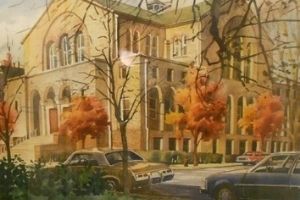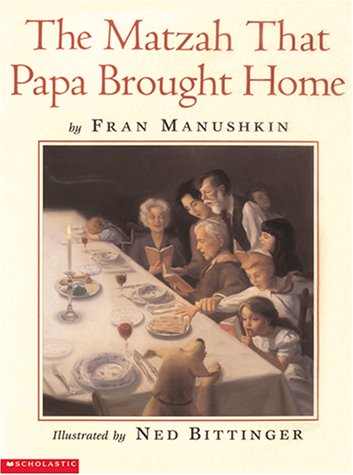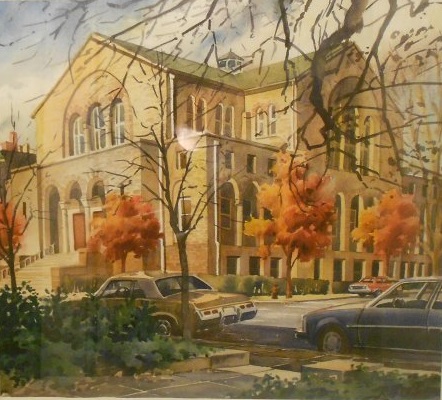Looking for Stories of Culture

By exhibitions intern Tirza Ochrach-Konradi. To read more posts from JMM interns, past and present, click here.
Judaism is built on stories, which is natural for any religion. Religions are based on shared beliefs and the story format is the way a lot of that content gets passed down generation to generation. Religious stories act like pneumonic devices for religious beliefs. It would not be easy to compile, maintain, and memorize a giant bulleted list of religious beliefs, but it is attainable to establish, maintain, and recollect from a big book of stories.
Jewish religious stories are super accessible and have been carefully maintained but, the particular Jewish stories that I am interested in are less carefully stored. I am interested in the stories of Jewish culture and Jewish community. The stories that come from Jews as a group of people doing things together that are designed to share what it means to participate in Jewish culture. This is entirely personal bias. I am not a religious Jew and cultural Jewish stories resonate more with me.
I learned holiday traditions from my parents, but I also had those traditions reinforced through reading story books. In particular I remember reading The Matzah that Papa Brought Home which is by Fran Manushkin and illustrated by Ned Bittinger about Passover and Purim Play by Roni Schotter as well as ZigaZak! a Hanukah book by Eric Kimmel illustrated by John Goodell. As a child these stories helped me understand my family’s traditions and situate them into a larger culture. Participation in religious community was not right for us because we didn’t believe. We also didn’t live in an area with a high population of Jewish neighbors so these stories were the way I got a broader understanding of the traditions and holidays my family undertook.

This summer has been fun because the oral histories that I have been working with are basically big cultural Jewish stories. This includes the collection project I am focusing on. I have been part of conducting a major interview project for Beth Am. The congregation is collecting the recollections of members who were present during the earliest years of the synagogue. Some of these people are folks who went to Chizuk Amuno when it was in the Eutaw Place temple and chose to remain in the downtown location when the rest of Chizuk Amuno moved to their Stevenson location. The rest of the participants are individuals who joined very early on in the life of the congregation.
I do feel out of my depth when interviewees reference religious practices with words I’ve never heard before. However, even though this project revolves around a religious institution, I find that what I really get is a sense of how these people built a Jewish community. The stories I get to collect are full of accounts of how friends drew other friends in, how the membership took pride in being a “do-it-yourself” shul where everything from youth education to painting the building was undertaken by rank-and-file members, and how the biggest strength of the shul is its open and welcoming culture.

I’ve personally interviewed five people this summer and I’ve heard and transcribed the recordings of five more. Because these interviews are so intently focused on the one topic the effect of having heard all of the recollections is as if I have read the same story written out by ten different people. Each version highlights different events and participants. Together they build a picture of the full reality of the experience. It is awesome to have this front row seat in pulling together the piece. Like the books of my childhood, these stories have been able to share a sense of Jewish community and help me understand myself as part of a bigger culture.

1 reply on “Looking for Stories of Culture”
I enjoyed reading the personal side of what the oral history stories meant to the writer and helped understand some of Jewish practices and the references to childhood books. Good job!